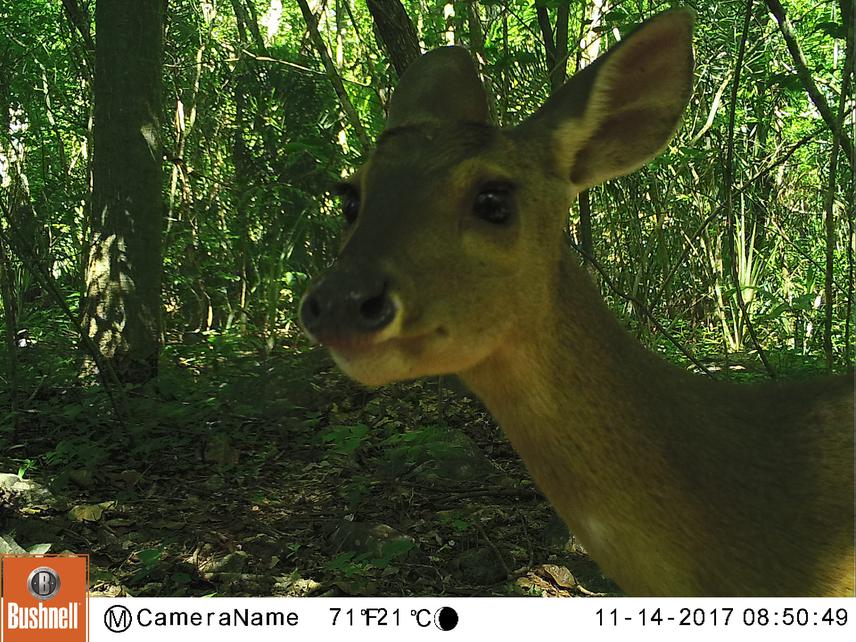Isabel Melo Vasquez
My study will assess the threshold of species loss in the Brazilian Cerrado, specifically at the Bodoquena plateau, by using key mammal species, whose habitat requirements make them susceptible to disappear. I will also assess how stakeholders understand the concept of thresholds and key aspects of conservation to make concrete suggestions for policymaking. I expect that work will provide a better understanding for making informed conservation decisions regarding the ecological features that need to be preserved at landscape scale.

Mazama gouazoubira.
Human-induced land use change is the most important threat affecting the survival of several species and reducing the provision of environmental services for local communities. The Brazilian Cerrado has lost 60% of its native vegetation so far (Ferreira et al. 2012). Recent studies have shown that once the vegetation cover of the landscapes reaches certain levels, the number of species decline faster, which is called threshold of species loss. In Brazil, most of the thresholdos of species loss have been done in the Amazon and Atlantic Forest biomes; to date there are only two published studies in the Cerrado. It is urgent to undertake such studies in human-modified landscapes to provide relevant information for decision making and conservation in private lands.
The main objectives of this study are to assess the thresholds of species loss in human-modified landscapes of the Serra da Bodoquena plateau using medium and large mammals, and to understand the perception of different stakeholders about key conservation issues of the area. Based on the assumption that certain characteristics in the Cerrado (such as historic climatic variation and heterogeneity of the vegetation structure) make more resilient those species sensitive to habitat loss, I expect to obtain a lower threshold value than those reported for the Amazon Basin and Atlantic Forest biomes.
This study will gather data in 14 landscape units (hexagons of 5000 hectares each) with a native vegetation cover gradient from 9 to 81 %, located in Bonito, Bogoquena and Jardim municipalities. The methods are based on Ochoa-Quintero and co-workers (2017), who assessed thresholds of species loss in the Amazon. The data will be analysed by running generalized linear regression models (GLM) in order to identify the influence of the variables on the changes in species richness along the native vegetation gradient. Once the most important variable is identified, I will run a piece wise analysis (Muggeo 2004) to find the potential thresholds associated with environmental gradient. In addition, I will interview stakeholders to understand their perceptions about the threshold concept and key aspects of conservation to make concrete suggestions for policymaking.